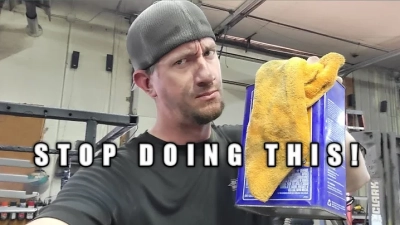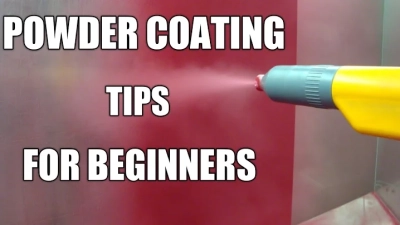Understanding Global Standards in Powder Coating Manufacturing
In the rapidly evolving world of manufacturing, powder coating has emerged as a pivotal technology for enhancing the durability and aesthetic appeal of various products. Understanding global standards in powder coating manufacturing is crucial for industry stakeholders as these standards ensure the quality, safety, and environmental compliance of coated materials. As the demand for high-performance coatings continues to rise across numerous sectors, from automotive to architecture, adherence to these internationally recognized guidelines becomes imperative. This blog will delve into the essential aspects of powder coating standards, exploring how they shape production processes, influence material selection, and ultimately contribute to sustainable practices in the industry. By grasping these global benchmarks, manufacturers can not only improve their product offerings but also foster a competitive edge in the marketplace.
Global Powder Coating Market Trends and Growth Projections
The global powder coating market is experiencing significant growth, propelled by increasing demand from various industries, such as automotive, construction, and electronics. According to recent analyses, the market is expected to expand at a compound annual growth rate (CAGR) of over 6% in the coming years. Factors contributing to this trend include the rising awareness of environmental sustainability, as powder coatings are known for their lower volatile organic compound (VOC) emissions compared to traditional liquid coatings. This shift towards eco-friendly solutions is prompting manufacturers to invest in innovative technologies and formulations.
In addition to environmental considerations, the expansion of urbanization and infrastructure development is driving the demand for powder coatings. As more industries recognize the benefits of durability, versatility, and aesthetic appeal offered by powder coatings, adoption rates are steadily increasing. Moreover, advancements in application techniques and machinery are enhancing the efficiency and quality of powder coating processes, making them more accessible to manufacturers across various sectors. With these trends in mind, stakeholders in the powder coating industry must stay attuned to emerging market dynamics and consumer preferences to sustain their competitive edge.
Understanding Global Standards in Powder Coating Manufacturing
The chart illustrates the projected growth of the global powder coating market from 2021 to 2025, reflecting the increasing demand for powder coatings across various industries.
Key International Standards for Powder Coating Processes and Products
In the realm of powder coating manufacturing, understanding key international standards is crucial for ensuring product quality and environmental compliance. Standards such as ISO 12944 for corrosion protection and ASTM D823 for film thickness play vital roles in establishing benchmarks that manufacturers must meet. These guidelines not only enhance product performance but also promote sustainability in the industry.
Recent innovations, such as Clariant's new Exolit® flame retardants introduced at the 2019 China International Coatings Exhibition, exemplify the industry's commitment to adhering to global standards while advancing sustainability. These advanced additives provide effective fire protection, aligning with international environmental standards and pushing the industry towards greener practices. Moreover, the development of high-performance light stabilizers like Hostavin® demonstrates the importance of innovation in maintaining compliance with safety regulations and enhancing the durability of coatings used in architectural applications.
The growing emphasis on quality and sustainability is further supported by market reports, indicating a robust increase in demand for powder coating solutions. According to the latest industry research, China’s paint and ink sector, which encompasses powder coatings, is expected to grow significantly, driven by advancements in technology and stringent regulations. Fostering a culture of compliance with international standards will be key to navigating these changes and achieving long-term growth in this competitive landscape.
Understanding Global Standards in Powder Coating Manufacturing
| Standard |
Description |
Region |
Year Established |
| ISO 9001 |
Quality management systems - Requirements |
Global |
1987 |
| ASTM D523 |
Standard Test Method for Specular Gloss |
United States |
2019 |
| ISO 11124 |
Preparation of steel substrates before application of paints and related products |
Global |
2015 |
| EN 1021 |
Furniture - Assessment of ignitability of upholstered furniture |
Europe |
1994 |
| ISO 14001 |
Environmental management systems - Requirements with guidance for use |
Global |
1996 |
Impact of Environmental Regulations on Powder Coating Manufacturing
The powder coating manufacturing industry has undergone significant transformations in response to increasing environmental regulations. These regulations are designed to minimize pollutants and reduce the overall environmental impact of manufacturing processes. As a result, many manufacturers are adopting more eco-friendly practices, including the use of low-VOC (volatile organic compounds) materials and advanced application techniques that enhance efficiency while cutting down waste.
One key factor influencing powder coating manufacturing is the regulatory push towards sustainability. Compliance with standards set by environmental agencies forces manufacturers to invest in research and development, leading to innovative technologies that not only meet regulatory requirements but also improve product quality. For instance, advancements in powder coating formulations have allowed for the development of durable coatings that require fewer resources in their production, aligning with the global sustainability movement.
Moreover, environmental regulations can open new market opportunities for manufacturers willing to adapt to these standards. By embracing eco-friendly practices, companies can appeal to a broader consumer base that prioritizes sustainability in their purchasing decisions. This shift not only helps businesses stay compliant but also fosters a more sustainable industry, which can ultimately lead to enhanced customer loyalty and brand reputation.

Quality Control Measures and Testing Methods in Powder Coating
In the powder coating manufacturing industry, the implementation of rigorous quality control measures is essential for ensuring product durability and aesthetics. According to a report by the Powder Coating Institute, approximately 30% of all powder coating failures are attributed to improper application techniques and insufficient testing methods. To combat this, manufacturers are increasingly adopting advanced quality control protocols, including in-process inspections, batch testing, and final product evaluations.
One prominent testing method is the adhesion test, which assesses how well the powder coating adheres to the substrate under various conditions. The American Society for Testing and Materials (ASTM) mandates that coatings undergo a series of adhesion tests, such as the Crosshatch Adhesion Test, to determine long-term durability. These tests often reveal that coatings with a proper application thickness of 2.5 to 3 mils exhibit superior adhesion and resistance to chipping or peeling.
Additionally, impact resistance testing is crucial for products that will be subjected to mechanical stress. According to industry standards, coatings must withstand at least a 1.0 Joule impact without failure. Implementing these testing methods not only improves product performance but also enhances customer satisfaction and reduces the likelihood of returns. The push for higher quality standards continues to drive innovation within the powder coating sector, leading to safer and more sustainable manufacturing practices.

Sustainability Practices in Powder Coating and Their Global Importance
The powder coating industry is increasingly recognizing the significance of sustainability practices as a global necessity. With the growing concerns about environmental degradation and resource depletion, manufacturers are adopting eco-friendly approaches in their operations. Sustainable powder coating formulations, which are free from harmful solvents and volatile organic compounds (VOCs), not only reduce emissions but also improve the safety and health of workers. By shifting to water-based and powder-based coatings, companies can minimize their environmental footprint while still delivering high-quality finishes that meet consumer demands.
Additionally, the implementation of energy-efficient processes is essential in the quest for sustainability. Many manufacturers are investing in advanced curing technologies that lower energy consumption and enhance efficiency. By optimizing production schedules and integrating renewable energy sources, companies can significantly reduce their operational carbon emissions. These practices not only address regulatory pressures but also resonate with consumers increasingly prioritizing sustainable products. As the global market shifts towards these environmentally conscious practices, the powder coating industry is positioned to lead by example, demonstrating that sustainability does not have to compromise quality or performance.
Understanding Global Standards in Powder Coating Manufacturing

Home
About Us
Products
Industry Application
Blog
Support
FAQ
Contact Us





